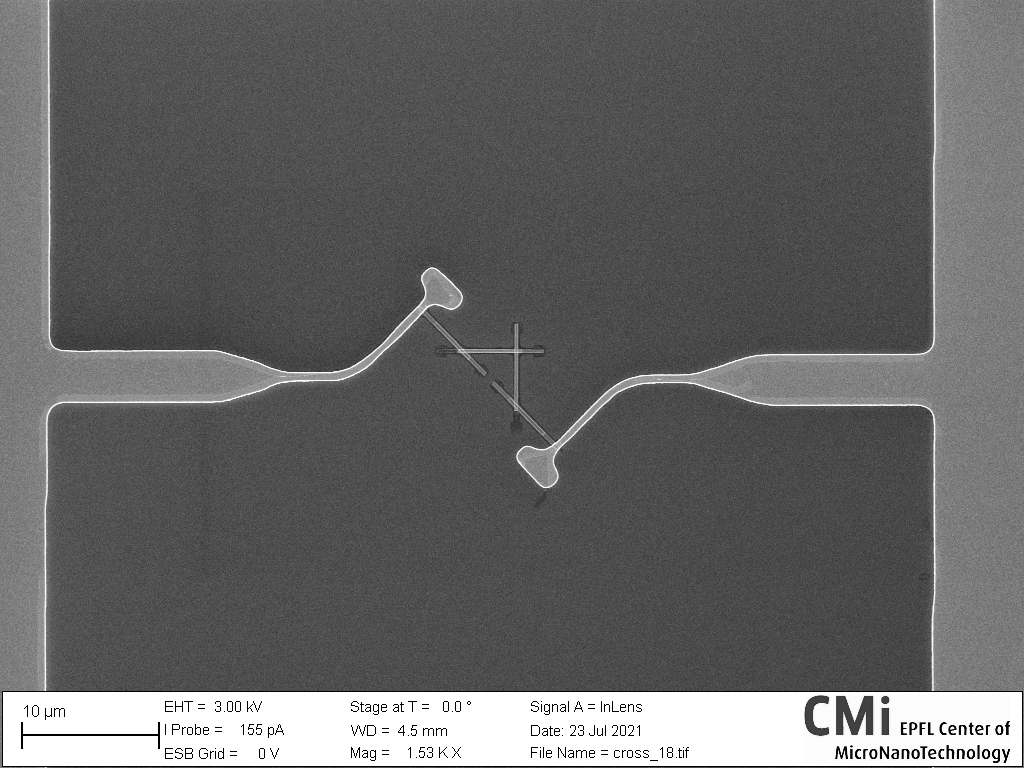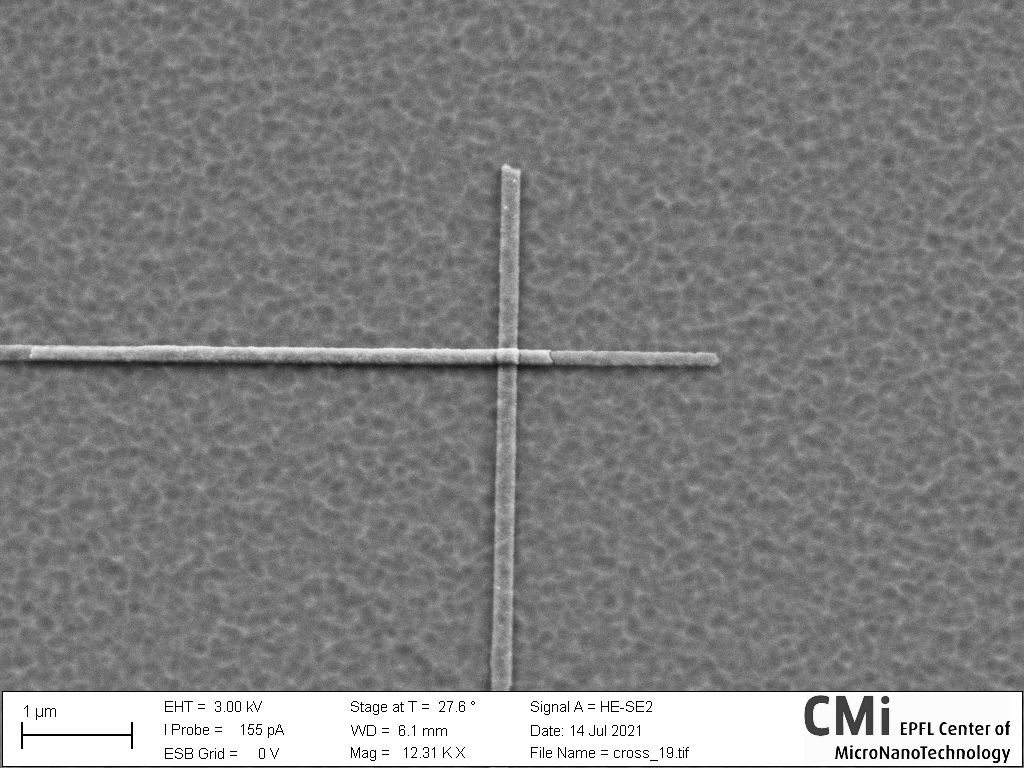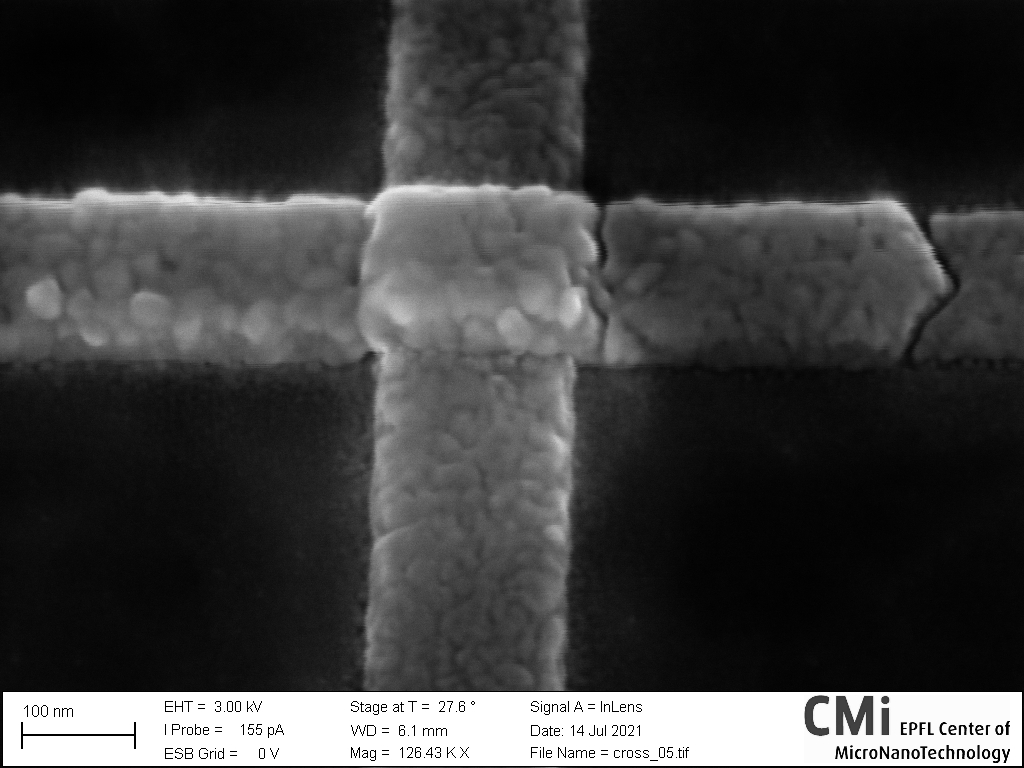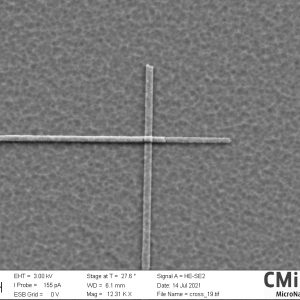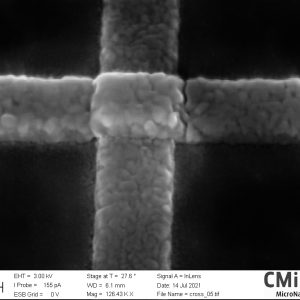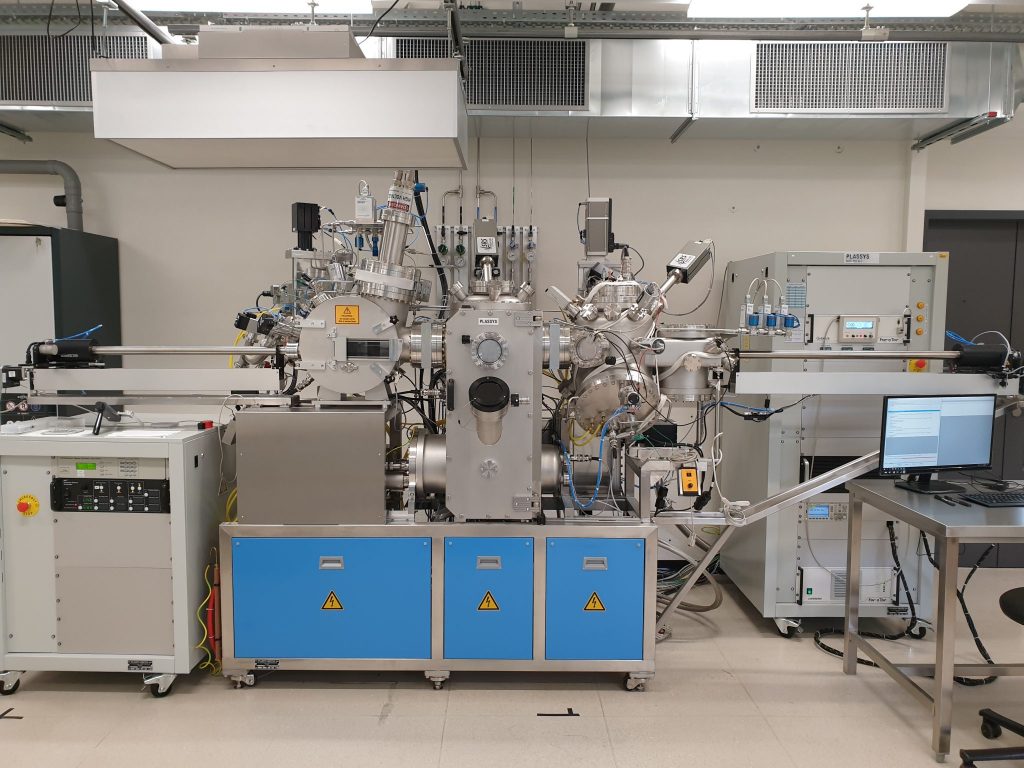
Please read carefully Restrictions and precautions before starting !
Contents
- Introduction
- Equipment description
- How to use the system
- Restrictions and precautions
- Photos Gallery
I. Introduction
The Plassys MEB550SL3 UHV Evaporator is an equipment specially designed for Josephson junctions fabrication and Qubit applications.
The system allows monolayer or multilayer deposition of metals under controlled angle (shadow deposition) and oxides growth.
The system is composed of 3 x chambers with each their capabilities:
- Loadlock.
- Evaporation chamber.
- Oxidation chamber.
II. Equipment description
Dimensions and capabilities
2 x substrates holders are available:
- One for 100 mm wafers.
- One adapted for chips.
Only one substrat holder can be loaded and used in the equipment at a time.
Tilt & rotation
Both the loadlock and the evaporation chamber are equipped with rotating fixtures.
- Tilt: The angle of incidence can be controlled either for the ion milling (Loadlock) or the metal evaporation (Evaporation chamber).
- Rotation: Fixtures can be controlled in theta Θ (Continuous rotation or fixed Θ).
Ion source
The ion source is gridded type. The ion milling is done in the loadlock.
Ozone generation
Ozone can be generated if needed.
Evaporation & thickness measurement
The system is equipped with electron beam gun.
The film thickness is determined by following the change in frequency of a quartz crystal.
Heating
The heating of the substrat is achieved by:
- Loadlock : Max. 200°C.
- Evaporation chamber: Max. 750-800°C.
- Oxidation chamber: Max. 1000°C.
Note:
- As usual, the real temperature of the sample differs from the heating element.
- Transfer can not be done if the temperature exceeds 300°C.
Oxidation
Material oxidation can be done in oxygen atmosphere (3 different modes available).
Pumping
The Loadlock and the Oxidation chamber are equipped with turbomolecular pumps.
The Evaporation chamber is equipped with a cryogenic pump.
III. How to use the system
Run a process
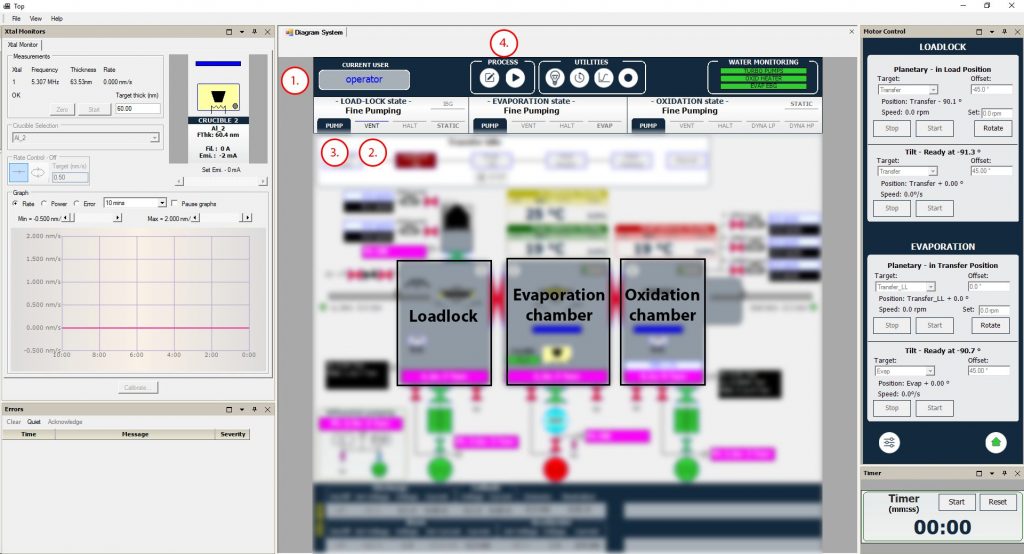
- Control if the account “operator” is selected. If not, press Current user and log in with the username: operator & password: ope.
- Vent the loadlock LOAD-LOCK state → Vent.
- Mount the sample on the substrate holder.
- Release / remove screws by using the Allen key for M3 screws.
- Select the proper / adapted parts to hold the sample.
- Place the sample on the substrate holder.
- Use the precision tweezer to hold parts and tighten gently screws with the Allen key.
- Confirm that everything is secured before going further.
- REMINDER : Restrictions and precautions
- Load without forcing the substrate holder into the loadlock with the dedicated tool.
- Click on Run Process to open the Process Execution window.
- Select the process Browse → Open.
- Execute the process selected Execute.
Note: It is recommended to limit the exposure of the loadlock to the air. Therefore, close the door even if the loadlock is kept at atmospheric pressure for several minutes! In case of the mounting of the sample on the holder takes a longer times, do not hesitate to pump down the loadlock in between.
Recipe edition
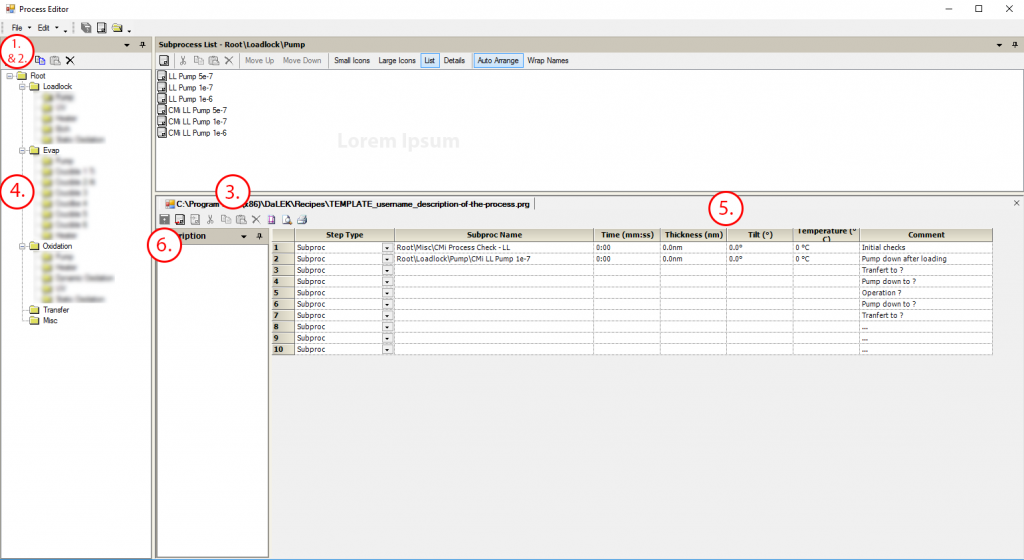
Please respect points below:
- Do not modify a recipe which is not yours!
- Respect the naming system for the title of the recipe : username_description-of-the-process.prg
- Sort recipes by lab’s folders.
- Click on Edit process to open the Process Editor.
- Open the recipe File → Open Recipe… OR Create a new recipe File → New Recipe. Note: This is recommended to use the template TEMPLATE_username_description-of-the-process.prg as a starting point.
- Use the commands Add Step, Insert Step, Cut Step, Copy Step, Paste Step, Delete Step to add or remove a step.
- Drag and drop subroutines from the main library to the recipe. Note: Do not modify subroutines without CMi staff approval. The final structure of the recipe should look like this:
- Initial check (CMi Proces Check – LL)
- Pump down after loading (CMi LL Pump Xe-Y)
- Transfert to ?
- Pump down to ?
- Operation ?
- Pump down to ?
- Transfert to ?
- …
- …
- Modify values for the Time, Thickness, Tilt or Temperature. Note: Values which can be changed in the recipe can be easily identified. Please check the name of the subroutine and find the parameter followed by a question mark ?.
- Save the recipe Save.
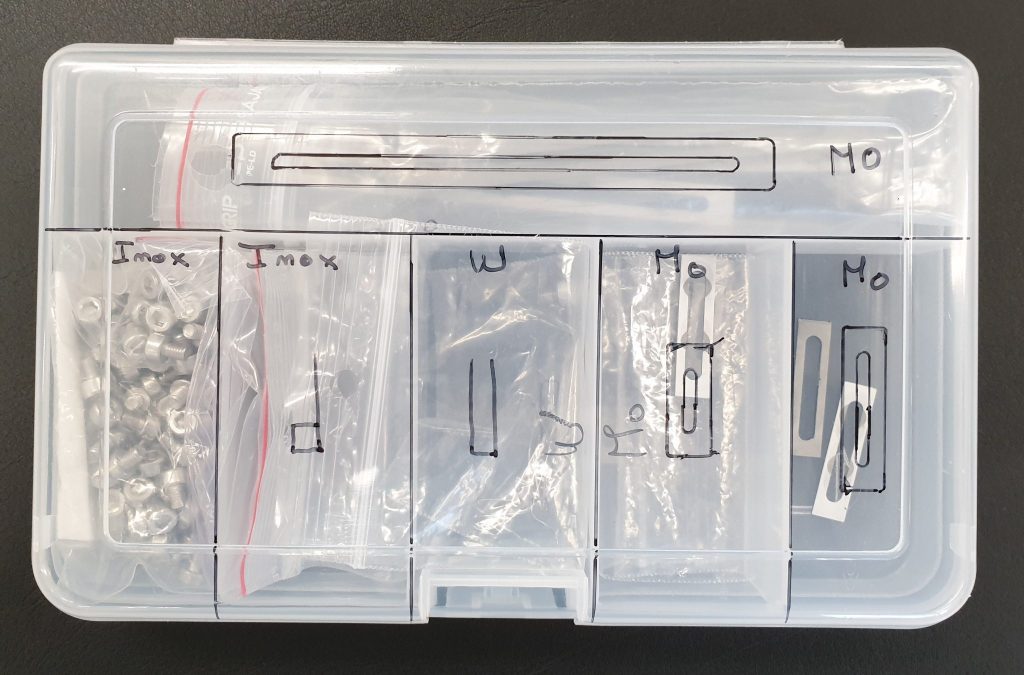
IV. Restrictions and precautions
- In case of use of the chip holder: All holes have to be closed / protected to prevent threads and fixtures exposure (During the ion milling and/or evaporation). Screws have to be screwed in but without protruding from the rear face of the holder.
V. Photos Gallery
